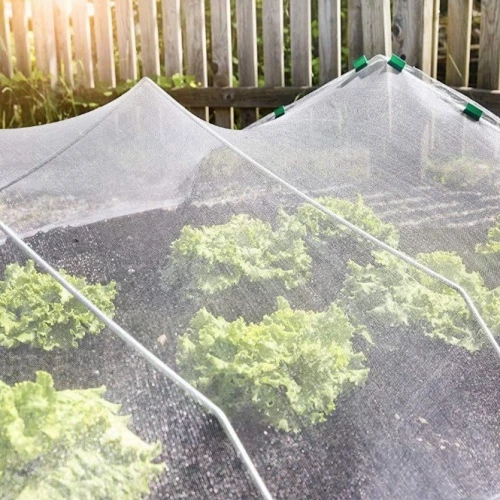-
 Afrikaans
Afrikaans -
 Albanian
Albanian -
 Amharic
Amharic -
 Arabic
Arabic -
 Armenian
Armenian -
 Azerbaijani
Azerbaijani -
 Basque
Basque -
 Belarusian
Belarusian -
 Bengali
Bengali -
 Bosnian
Bosnian -
 Bulgarian
Bulgarian -
 Catalan
Catalan -
 Cebuano
Cebuano -
 China
China -
 Corsican
Corsican -
 Croatian
Croatian -
 Czech
Czech -
 Danish
Danish -
 Dutch
Dutch -
 English
English -
 Esperanto
Esperanto -
 Estonian
Estonian -
 Finnish
Finnish -
 French
French -
 Frisian
Frisian -
 Galician
Galician -
 Georgian
Georgian -
 German
German -
 Greek
Greek -
 Gujarati
Gujarati -
 Haitian Creole
Haitian Creole -
 hausa
hausa -
 hawaiian
hawaiian -
 Hebrew
Hebrew -
 Hindi
Hindi -
 Miao
Miao -
 Hungarian
Hungarian -
 Icelandic
Icelandic -
 igbo
igbo -
 Indonesian
Indonesian -
 irish
irish -
 Italian
Italian -
 Japanese
Japanese -
 Javanese
Javanese -
 Kannada
Kannada -
 kazakh
kazakh -
 Khmer
Khmer -
 Rwandese
Rwandese -
 Korean
Korean -
 Kurdish
Kurdish -
 Kyrgyz
Kyrgyz -
 Lao
Lao -
 Latin
Latin -
 Latvian
Latvian -
 Lithuanian
Lithuanian -
 Luxembourgish
Luxembourgish -
 Macedonian
Macedonian -
 Malgashi
Malgashi -
 Malay
Malay -
 Malayalam
Malayalam -
 Maltese
Maltese -
 Maori
Maori -
 Marathi
Marathi -
 Mongolian
Mongolian -
 Myanmar
Myanmar -
 Nepali
Nepali -
 Norwegian
Norwegian -
 Norwegian
Norwegian -
 Occitan
Occitan -
 Pashto
Pashto -
 Persian
Persian -
 Polish
Polish -
 Portuguese
Portuguese -
 Punjabi
Punjabi -
 Romanian
Romanian -
 Russian
Russian -
 Samoan
Samoan -
 Scottish Gaelic
Scottish Gaelic -
 Serbian
Serbian -
 Sesotho
Sesotho -
 Shona
Shona -
 Sindhi
Sindhi -
 Sinhala
Sinhala -
 Slovak
Slovak -
 Slovenian
Slovenian -
 Somali
Somali -
 Spanish
Spanish -
 Sundanese
Sundanese -
 Swahili
Swahili -
 Swedish
Swedish -
 Tagalog
Tagalog -
 Tajik
Tajik -
 Tamil
Tamil -
 Tatar
Tatar -
 Telugu
Telugu -
 Thai
Thai -
 Turkish
Turkish -
 Turkmen
Turkmen -
 Ukrainian
Ukrainian -
 Urdu
Urdu -
 Uighur
Uighur -
 Uzbek
Uzbek -
 Vietnamese
Vietnamese -
 Welsh
Welsh -
 Bantu
Bantu -
 Yiddish
Yiddish -
 Yoruba
Yoruba -
 Zulu
Zulu
insect net for agriculture
Insect Nets for Agriculture A Sustainable Solution for Crop Protection
In the realm of modern agriculture, farmers constantly seek innovative solutions to protect their crops from pests while minimizing the use of chemical pesticides. One highly effective and sustainable method gaining traction is the use of insect nets. These nets serve as a physical barrier to prevent insect pests from damaging crops, offering a multifaceted approach to pest management.
Insect nets are typically made from lightweight, breathable materials such as polyethylene or polypropylene. They come in various mesh sizes, enabling farmers to choose the type best suited for their specific crop and pest challenges. The principal benefit of using these nets is their ability to exclude harmful insects while allowing sunlight, air, and moisture to reach the plants. This creates an ideal microclimate for crop growth while safeguarding them against a myriad of pests, including aphids, beetles, and even larger nuisances such as birds.
Insect Nets for Agriculture A Sustainable Solution for Crop Protection
Additionally, insect nets can lead to increased crop yields and improved quality. By protecting plants from damaging pests, farmers can reduce the incidence of disease and stress, resulting in healthier crops. This, in turn, translates to better market prices and higher profits. Moreover, by reducing the need for chemical treatments, farmers can lower their operational costs and minimize the environmental impact of their agricultural practices.
insect net for agriculture

The implementation of insect nets also fosters resilience against climate change. As weather patterns become more unpredictable, traditional pest management strategies can falter. Insect nets provide a reliable protective measure that can withstand various climatic conditions. They shield crops from not only pests but also harsh environmental factors such as heavy rainfall and excessive sunlight, allowing for greater adaptability in fluctuating climates.
While the benefits are noteworthy, it is essential to recognize the challenges associated with the use of insect nets. Initial installation costs can be significant, particularly for large-scale operations. Farmers must also ensure proper maintenance and monitoring of the nets to prevent issues such as pest entry through gaps or tears. Additionally, specific crops may require different net types and configurations, demanding investment in diverse netting solutions.
Nevertheless, advancements in technology and design are making insect nets more accessible and effective for a broader range of crops and farming systems. Research and development in net materials and structures continue to enhance their durability and performance. Programs promoting sustainable farming methods have also begun to offer financial assistance and resources for farmers transitioning to insect net systems.
In conclusion, insect nets represent a promising method for sustainable agriculture, blending economic viability, environmental stewardship, and effective pest management. As agricultural challenges evolve, the adoption of innovative solutions like insect nets will be essential in ensuring food security while protecting our planet's health. Embracing this technology can lead farmers toward a more sustainable future, fostering resilient ecosystems and thriving agricultural communities. The journey towards effective pest management in agriculture is indeed being redefined through the thoughtful application of insect nets.
-
Shipping Plastic Bags for Every NeedNewsJul.24,2025
-
Safety Netting: Your Shield in ConstructionNewsJul.24,2025
-
Plastic Mesh Netting for Everyday UseNewsJul.24,2025
-
Nylon Netting for Every UseNewsJul.24,2025
-
Mesh Breeder Box for Fish TanksNewsJul.24,2025
-
Expanded Steel Mesh Offers Durable VersatilityNewsJul.24,2025











